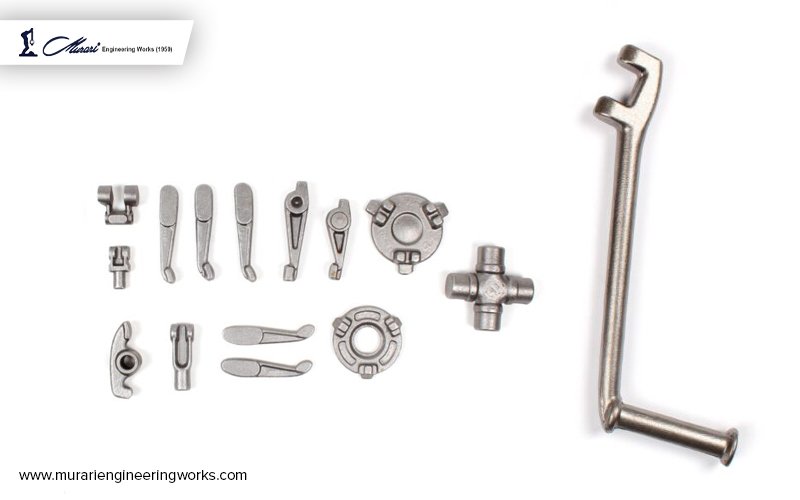Forging has crucial industrial applications in many sectors, including agriculture, hand tools and hardware, aerospace, sewing machine parts, and many more.
The low production cost and ease of manufacture make forging a popular choice for automotive parts manufacturing.
However, it offers many more benefits than the above-mentioned. This article will discuss the benefits and also which material is suitable for automotive parts manufacturing.
Benefits of Automotive Parts Forging
The material and forging process can only offer certain benefits. But the benefits predominantly depend on the auto parts forging unit and the strength of the forged parts.
- Enhanced Durability
The forging process enhances the strength of the automotive metals. Heating and exerting high pressure on the material makes it durable against high temperature and pressure conditions.
It further increases the shelf life of the automotive material since it does not change the material characteristics. Forging for automotive parts is a better option than casting.
- Cost-Effective
The tools and machines for forging are much cheaper than casting. The casting process involves liquifying the metal and then hardening the molten metal in a die/cast. It requires more machinery to cast metal.
Further, the increased strength of the forged material increases its ability to withstand rough conditions. Thus, making it more reliable.
- Superior Properties
Due to the heating and high pressure, there is an improvement in the metal’s metallurgical properties.
The high temperature and pressure conditions increase the material’s stress-bearing capacity, ductility, and toughness.
Different types of Forged Automotive Parts
- Control Arms
They add to the overall stability and drivability of the vehicle. The control arms are responsible for steering a car and guiding the wheels up and down simultaneously.
- Connecting Rods
It forms a part of the piston engine that connects the piston to the crankshaft and serves as the backbone of the automotive part.
It converts the rotation process of the piston to the rotation of the crankshaft.
- Crankshafts
They are responsible for the functioning of the engine. Crankshafts convert linear motion to rotational motion.
Wear-resistant crankshafts for automotive parts ensure a longer life and smoothens engine revolutions.
- Steering Knuckle
It controls the movements of the front wheels through the steering wheel. The wheel spindles attached to the suspension control the automotive steering system.
However, lightweight steering knuckle for automotive engines is the predominant factor when choosing forged automotive parts.
Which Material is Best for Automotive Parts Forging?
Steel-forged automotive parts are the best choice. Although steel is not a lightweight option, it certainly offers many unavoidable benefits.
- Stronger Automotive Parts
Steel enhances the strength and ductility of automotive parts.
During the closed die forging, the metal undergoes high temperature and pressure conditions, which deforms the internal grains of steel metal. Thus, the material has similar internal grains throughout.
- Using Different materials
Closed-die steel forging is compatible with carbon steel, alloy steel, and stainless steel.
It helps to choose different materials for different automotive parts. Thus, making automotive vehicles suitable for different applications.
Why Choose Murari Engineering Works?
Murari Engineering has been creating high-quality forged materials for various industries since 1959.
We are adamant about providing customer satisfaction with technical support and on-time delivery.
We were the early beginners of forging units in Ludhiana and continue to be the best-in-class forging unit.

